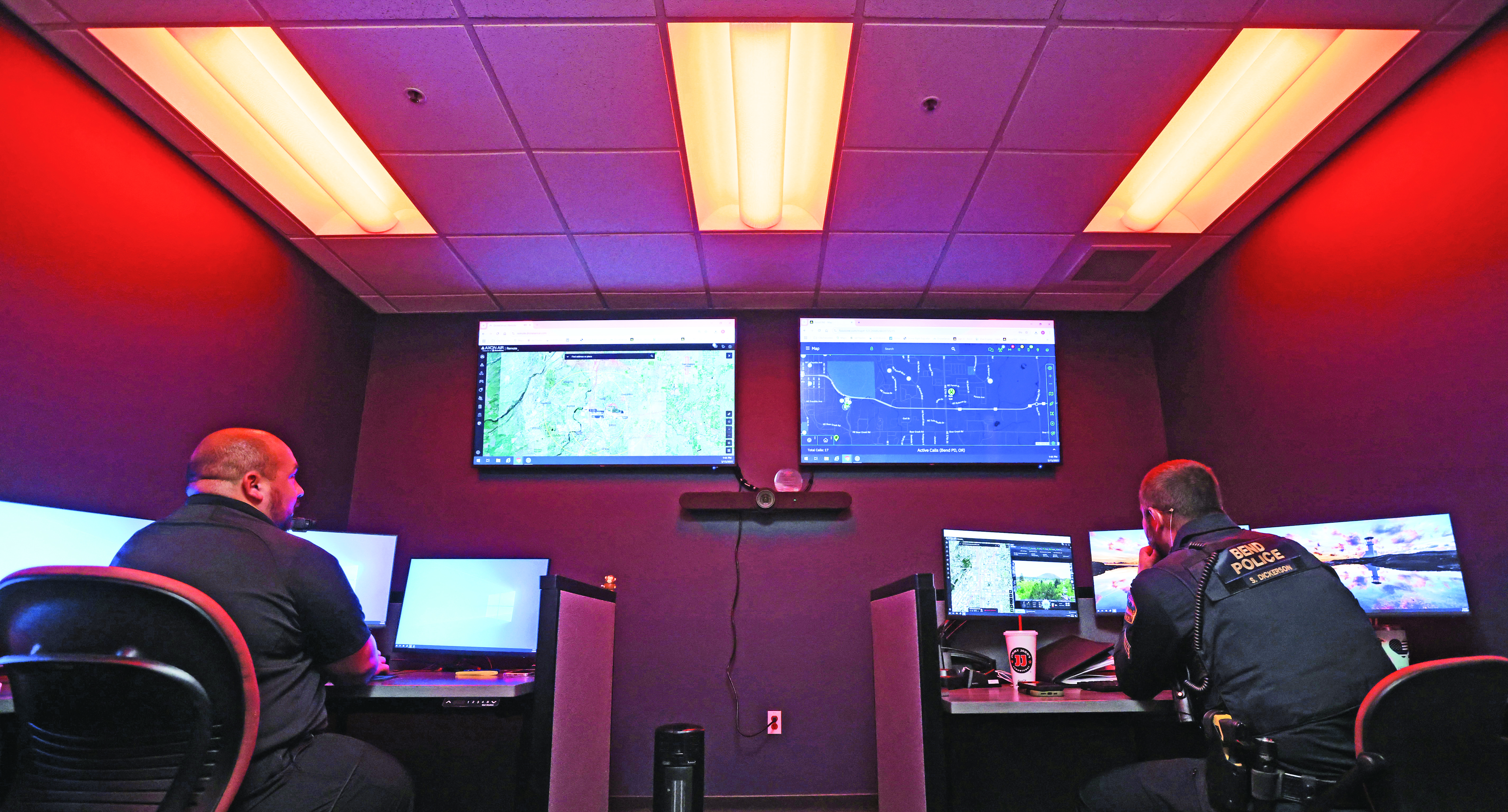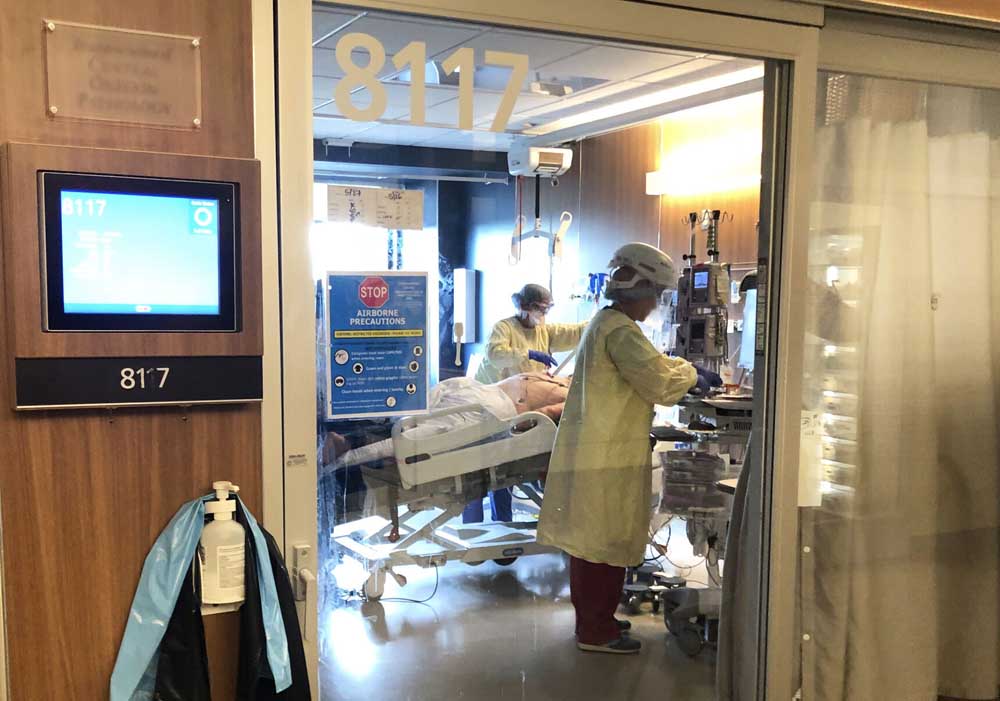Glass Buttes yield obsidian
Published 4:00 am Thursday, February 23, 2012
About 10 years ago, a friend and colleague who used to work at The Bulletin told me this hilarious, true story. She and her husband had visited Newberry National Volcanic Monument, home to Paulina Peak, East and Paulina lakes, and impressive flows of obsidian, the beautiful black glass formed by rapidly cooling lava.
Obsidian can be sharpened into arrowheads and blades smoother than metal, and was prized among ancient Native Americans, who traded it far and wide.
The ancients did not, I believe, load obsidian into cars by the trunkful, but Co-worker and her husband did. Their plan — and bear in mind they weren’t intentionally breaking any laws, but try telling that to a jury and see how far you get — was to take it home and decorate their garden with it.
By happenstance, just before they left, a U.S. Forest Service employee walked by and asked how they were enjoying their visit.
“Great!” Coworker replied, then told of how they’d just loaded up on obsidian and looked forward to seeing it in their yard.
After the rightfully flabbergasted Forest Service employee explained it’s illegal to take rocks from a national monument, the obsidian was safely released back into the wild.
They could have skipped the trouble, and the part where I laughed at her a bit more than she’d anticipated, if they’d just gone to Glass Buttes.
Located on Bureau of Land Management land in Lake County about 80 miles southeast of Bend, it’s still OK to take obsidian at Glass Buttes. It’s so abundant here you pretty much can’t throw a rock without it hitting, or being, obsidian.
Here, writes “Oregon’s Dry Side” author Alan D. St. John, “countless generations of Paiute Indians gathered volcanic obsidian glass for arrowheads and other implements.”
“Glass Buttes” seems like it should be plain old Glass Butte, as many refer to it. According to “Oregon Geographic Names” by Lewis A. and Lewis L. McArthur, the landmark is made up of a couple of domes (elevation 6,390 feet) and smaller hills.
These days, “the Glass Buttes obsidian area is the most popular and most accessible for visitors,” according to www.blm.gov. “The area is very rugged, remote, and primitive.”
My wife and two of our three daughters traveled to Glass Buttes on Saturday, taking in the gorgeous vistas and cloud formations as we rolled through Millican, Brothers and Hampton on the way. In helpful, fatherly fashion, I counted off the mile markers whenever I happened to notice them (“29! 35! 48! 66!”) as my kids ignored me and played with their Nintendo DSIs in the back.
According to the Prineville District Office of the BLM, which can provide a handy pamphlet and map to those with proper foresight, “The public is allowed to collect a reasonable amount” of obsidian from Glass Buttes, with “reasonable amount” defined as “250 pounds per person per year.”
Even if you don’t plan on removing mass quantities of rock, do take a high-clearance, four-wheel-drive vehicle if you have access to one. Once you turn south off U.S. Highway 20 at mile marker 77, the unpaved road is briefly a deeply rutted smooth clay, then, over about the next two miles, it gets less rutted but a lot rougher, and dotted with pits and exposed rocks the size of cantaloupes and watermelon, with none of their squishiness. This 2.2-mile stretch was a little unnerving in a minivan, but we took it slow.
Once you reach the first possible left turn, you can take it uphill to different caches of obsidian. But we knew there was no chance of doing that in our van, so we instead parked at a well-used campsite on the right and walked up the hill. According “Bend, Overall” author Scott Cook, there are several varieties of obsidian around, including banded and mahogany, as well as piles of leftovers from previous visitors.
He wasn’t kidding. There was a pretty nice load of obsidian right where we’d parked, and I joked that we could pretty much just pick from others’ castoffs. But, of course, we did not bring hammers, protective eyewear and a picnic lunch 80 miles to do that.
My wife donned a shoulder bag and we marched uphill, taking in the High Desert views as we quickly filled the bag with rocks, which, though not yet cracked open, we could discern were obsidian by their dark color and shiny streaks. After about 30 minutes, the girls and I headed back downhill, despite my wife’s protests that we should hike higher (there’s one in every crowd).
At this point, we covered our rocks with an old towel and began cracking them open to see what treasures they yielded. We mostly found black and banded obsidian, a few flakes so thin they were translucent around the edges.
After that, we broke for lunch by the side of the road and marveled at all the solitude. We’d passed maybe 20 other vehicles once we’d gotten east of the Badlands, but out here there was no one else around for miles.
Before we left, we picked through our rocks for our favorite specimen and made sure not to leave anything around but our cast-off rocks for the next dad to joke about combing through.
If you go
Getting there: Take U.S. Highway 20 east from Bend to mile marker 77 (a four-wheel drive vehicle is advisable). Look for an unsigned dirt road on right. Proceed about 2.2 miles. Here, you can make a left turn and drive higher, or hike in. Look for varieties of obsidian strewn about.
Difficulty: Easy
Cost: Free
Contact: www.blm.gov/or/districts/prineville or 541-416-6700






